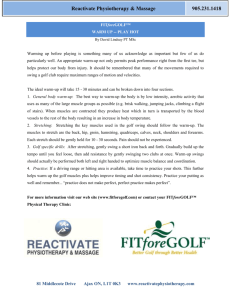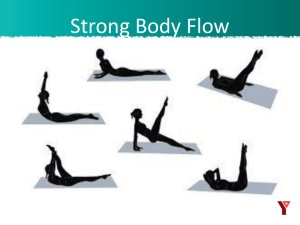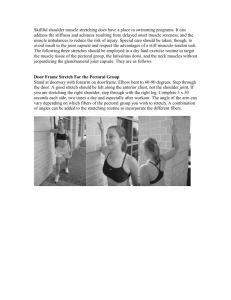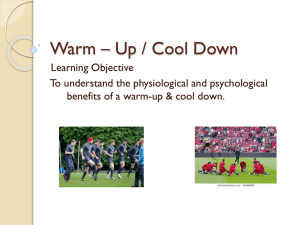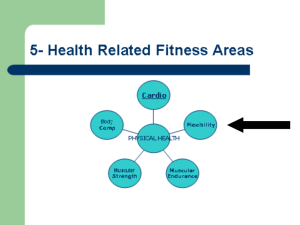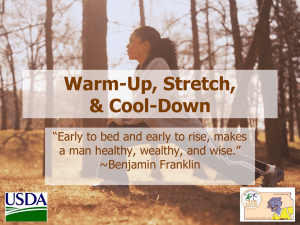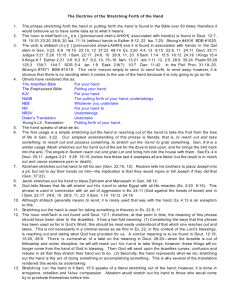Warm up and Cool down
advertisement
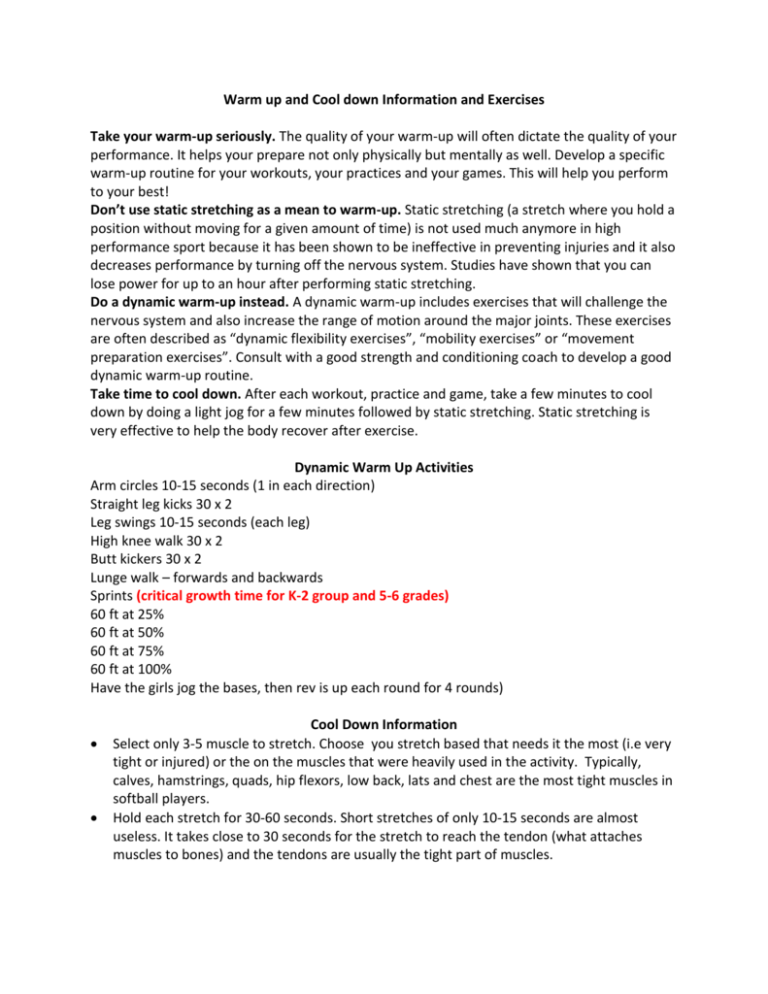
Warm up and Cool down Information and Exercises Take your warm-up seriously. The quality of your warm-up will often dictate the quality of your performance. It helps your prepare not only physically but mentally as well. Develop a specific warm-up routine for your workouts, your practices and your games. This will help you perform to your best! Don’t use static stretching as a mean to warm-up. Static stretching (a stretch where you hold a position without moving for a given amount of time) is not used much anymore in high performance sport because it has been shown to be ineffective in preventing injuries and it also decreases performance by turning off the nervous system. Studies have shown that you can lose power for up to an hour after performing static stretching. Do a dynamic warm-up instead. A dynamic warm-up includes exercises that will challenge the nervous system and also increase the range of motion around the major joints. These exercises are often described as “dynamic flexibility exercises”, “mobility exercises” or “movement preparation exercises”. Consult with a good strength and conditioning coach to develop a good dynamic warm-up routine. Take time to cool down. After each workout, practice and game, take a few minutes to cool down by doing a light jog for a few minutes followed by static stretching. Static stretching is very effective to help the body recover after exercise. Dynamic Warm Up Activities Arm circles 10-15 seconds (1 in each direction) Straight leg kicks 30 x 2 Leg swings 10-15 seconds (each leg) High knee walk 30 x 2 Butt kickers 30 x 2 Lunge walk – forwards and backwards Sprints (critical growth time for K-2 group and 5-6 grades) 60 ft at 25% 60 ft at 50% 60 ft at 75% 60 ft at 100% Have the girls jog the bases, then rev is up each round for 4 rounds) Cool Down Information Select only 3-5 muscle to stretch. Choose you stretch based that needs it the most (i.e very tight or injured) or the on the muscles that were heavily used in the activity. Typically, calves, hamstrings, quads, hip flexors, low back, lats and chest are the most tight muscles in softball players. Hold each stretch for 30-60 seconds. Short stretches of only 10-15 seconds are almost useless. It takes close to 30 seconds for the stretch to reach the tendon (what attaches muscles to bones) and the tendons are usually the tight part of muscles. Use only a mild, gentle tension. Stretch should comfortable and pleasant. Forget the kind of stretching you see done by gymnasts or martial artists. If you are making facial expressions while stretching, that's because you are stretching too far. Use deep breathing and let tension go. Static stretching should be pleasant and is a lot more effective when you are relaxed. Stretch regularly. Ideally, after every games, practices, and workout. No need to be long. Pick 3-5 stretches and stretch for 2-5 minutes. The Top 3 Softball Stretches (Flexibility is a critical in K-4th grade) Stretching is one of the most under-utilized techniques for improving athletic performance, preventing sports injury and properly rehabilitating sprain and strain injury. Don't make the mistake of thinking that something as simple as stretching won't be effective. Below are 3 very beneficial stretches for softball; obviously there are a lot more, but these are a great place to start. Please make special note of the instructions beside each stretch. Lying Knee Roll-over Stretch: While lying on your back, bend your knees and let them fall to one side. Keep your arms out to the side and let your back and hips rotate with your knees. Elbow-out Rotator Stretch: Stand with your hand behind the middle of your back and your elbow pointing out. Reach over with your other hand and gently pull your elbow forward. Rotating Wrist Stretch: Place one arm straight out in front and parallel to the ground. Rotate your wrist down and outwards and then use your other hand to further rotate your hand upwards.



